The Best Leaders Aren’t Afraid to Be Vulnerable
The Best Leaders Aren’t Afraid to Be Vulnerable

Until recent years, largely due to critiques of the toxic masculinity fueling this stereotype, the idea of showing emotion on the job was viewed as inappropriate at best, and at worst, mortifying.
In recent years, however, vulnerability in leaders — of all genders — has not just grown culturally acceptable, but in many cases, it’s welcomed and encouraged. Millennials, in particular, are much more likely to vocally share the challenges of caregiving, mental health struggles, and concerns about work/life balance than their Gen X and Boomer counterparts. Add to this an influx of Gen Z workers who have been found to be even more comfortable sharing their emotional and mental health needs, and it’s easy to see that the tides of work are changing.
Today, as the “future of work” becomes the present, and employers and employees push and pull against the needs of the other, the importance of open and candid communication is clear. Over the years, we’ve learned that leaders who create the space for true vulnerability build psychologically safe work environments in which people feel welcome to be themselves. We’ve learned that when people are willing to be authentic at work, they’re also more willing to take creative risks, share their perspectives without fear of a consequence, and make valuable contributions that can only be expressed within a culture that values trust and inclusion.
Emerging leaders, it’s up to you to set the tone for your workplace and build environments where vulnerability is celebrated. Those willing to practice vulnerability on a deeper, personal level, and adopt it as a principle, are those who will be credited with building a more equitable and innovative world of work — a world that the next generations want to see.
How to Be Vulnerable at Work
It’s easy to think of vulnerability as a skill, but when we do, we distort the value of being vulnerable in the first place. The point of being vulnerable is sharing the authentic parts of yourself that you may have otherwise chosen to hide or keep private. Doing so is a personal choice — rather than a skill — that we weigh every day. It requires the self-awareness to ask: Will being honest in this moment serve me? Will it serve others?
In the past, for instance, a “mental health day” was often a wink-nudge to others that you were going to use a sick day to miss work when you weren’t really sick. It’s safe to assume that this trend was an offshoot of the mental health stigma and the shame many workers still feel around prioritizing our well-being over our work. Now, the person who chooses to act vulnerably is the person who chooses to be honest about needing the day off to prevent burnout or to cope with, truly, a day of poor mental health. This is also the person who is changing the narrative around self-care and setting the example for others.
As a rising leader, here’s the challenge you face: How do you create a culture where your team feels empowered to be honest, share without fear of retribution, and ask for what they need?
Leading by Example
The perception of what it means to be vulnerable has shifted from the grand gesture to the small act of bravery. For leaders, and aspiring leaders especially, this means being transparent and modeling vulnerability for your team. When you lead by example, you open the door for people with less formalized power to safely emulate your behavior.
Here are two big ways you can get started:
1) Be honest about your struggles.
Personal confessions are powerful tools. You can use them to share vulnerable moments with your team, relate to them in meaningful ways, and importantly, develop trust.
Start small. When you’re struggling with a task, be honest. When you need help with something, ask for it. When you’re feeling drained due to circumstances at home, let people know you’re not 100% because of things in your personal life. In each of these seemingly minor moments, you’re letting people know that it’s okay to be honest about difficult things. Not only will this make people feel safer coming to you with bigger problems down the line, but it will also establish mutual trust — the foundation of inclusive and innovative teams.
Especially in your one-on-one meetings, aim to create a safe space by letting people know that it’s okay to be open about their mental state, difficulties in their personal lives that may impact how they show up day-to-day at work, and any obstacles they may be facing in their roles. You can initiate these conversations with a simple question to give people the opportunity to decide what they feel comfortable sharing. You can say: “I wanted to check in on how you’re feeling in general at work. Is everything manageable? Is there anything you need help with?”
You can’t help a team member, or offer them accommodations, if they aren’t open with you about what they need. Similarly, your team can’t perform at their best if they’re burned out, pent up, or struggling silently.
2) Do the difficult thing — even when others are hesitant.
When it comes to setting examples, your actions speak as loudly as your words. Vulnerability isn’t just about sharing your struggles, it’s also about standing up for your values and beliefs, publicly and privately.
For some managers, that might involve speaking out about what you believe is right in difficult moments: openly advocating for more equal pay among your team members, interrupting groupthink in meetings by offering a different perspective, introducing your pronouns in a group setting, or addressing a scary event in the news that may be impacting your team. As a leader, you can commit to being the first person to do the vulnerable — but inclusive and caring — thing.
The next time you feel triggered by the an event in the news, for instance, ask the question: “How is everyone feeling this week? I know there’s a lot going on and it can be exhausting to handle all at once. I’m feeling a little exhausted mentally myself, so I want to make sure everyone’s doing okay. This is a safe space to talk, and my door is open if you want to chat privately.”
Through this action, you create room for other people to model your behavior — to share their own values and perspectives. When you extend them that grace, you’re letting your team know that it’s okay to take risks and speak up, as long as they grant one another that same respect. Teams who feel safe expressing themselves in these vulnerable moments will similarly feel safe disagreeing and bouncing ideas off one another when solving problems in the context of work, leading to more valuable, inclusive, and unique solutions.
If any of those suggestions feels too big to tackle right now, practice through smaller, but equally powerful, actions: Go for a long walk in the middle of the day to prioritize your physical health (as opposed to eating lunch at your desk). Take a real mental health day to recover. Turn off your camera when you’re feeling Zoom fatigue and be honest about why, or block time on your calendar for a few minutes of personal time. These micro acts of bravery let your team know that it’s okay to prioritize their mental health and well-being at work.
One thing many leaders ask themselves when practicing vulnerability is: How do I follow the advice above without overdoing it? What information is beneficial to share and what information may backfire, make someone uncomfortable, or be otherwise harmful — regardless of my intentions — when attempting to exemplify vulnerability?
To be clear, the workplace is not your own personal reality show. As with most things, boundaries and professional standards reign supreme. In this, Brené Brown, researcher professor and vulnerability expert, has some sound advice: “Vulnerability minus boundaries is not vulnerability.”
The differences between having boundaries and having no boundaries may seem subtle, but in practice, the distinction is easy to spot. A leader with boundaries, for instance, might disclose they are having a hard day due to some personal issues. A leader without boundaries may explicitly detail the intricacies of their divorce in that same situation.
A sound rule for maintaining a culture of vulnerability while establishing healthy boundaries — especially when you’re the one sharing — is asking yourself: “Am I creating emotional labor for myself or others by sharing this?” If the answer is yes, you are likely oversharing. Pull yourself back, and workshop whatever statement or action you are making until the answer is clearly “no.”
Vulnerability engenders trust and camaraderie whereas oversharing can feel one-sided, selfish, or like an emotional burden on the listeners.
The Vulnerability Sea Change
For older and more traditional organizations tied up in conventional business practices, openness to increased vulnerability may feel foreign or uncomfortable, but don’t be mistaken. This movement toward open, honest, and equitable organizations isn’t a trend. As a new leader, you have the power to continue to shift the nature of work and what it means to be a professional. The ability to be vulnerable is less of skill than it is a superpower. How will you use yours?








